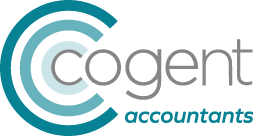Your initial interactions and agreements with a potential client are often pivotal to the scope and success of each contract.
These early exchanges lay the groundwork for a successful, mutually beneficial relationship.
Setting the right expectations from the outset not only facilitates smooth collaboration but also minimises misunderstandings – ensuring both parties are aligned with the project’s goals, scope, and limitations.
Based on our years of experience working with contractors and freelancers here are some tips on how you can set the stage for a fruitful contract:
- Communicate clearly and concisely
Communication is the cornerstone of setting expectations. Be explicit about what you can deliver, by when, and at what cost.
Use simple, jargon-free language to ensure your client understands your services and limitations.
This is also the time to discuss and agree upon the preferred methods and frequency of communication throughout the project.
- Define scope and deliverables
One of the most common pitfalls in freelance work is the dreaded scope creep. To avoid this, define the project’s scope and specific deliverables in detail.
What exactly are you being hired to do? What are the project milestones? What outcomes does the client expect?
Documenting these details can prevent scope creep and ensure both parties are on the same page.
- Establish deadlines and timelines
Timeliness is critical in maintaining trust and reliability. Establish realistic deadlines and build a timeline that outlines each phase of the project, including review periods and revisions.
This schedule should be attainable and allow for some flexibility to accommodate unforeseen circumstances.
- Discuss revisions and feedback
Feedback is a natural part of the creative process. Discuss upfront how you will handle revisions.
How many rounds of revisions are included? What constitutes a revision versus a new request?
Setting clear guidelines on feedback will help manage expectations and avoid potential conflicts.
- Outline payment terms
Money matters can be awkward but are crucial to discuss at the beginning. Be transparent about your rates, payment schedule, and any other expenses that may arise. What are the payment terms? When and how do you expect to be paid? Clarifying these details upfront will help avoid any financial misunderstandings later.
- Address availability and boundaries
As a contractor, you might be juggling multiple clients or projects. Be honest about your availability and the hours you’re reachable for discussions.
Setting boundaries early on helps manage your client’s expectations regarding your working hours and response times.
- Prepare for the unexpected
No matter how well you plan, projects can veer off course. Discuss a contingency plan for potential obstacles or changes in project scope. How will changes be handled? Who is the point of contact for making decisions? Preparing for the unexpected shows professionalism and flexibility.
- Get it in writing
Finally, ensure all agreed-upon terms are documented in a contract. This contract should include scope, deliverables, timelines, payment terms, confidentiality clauses, and any other pertinent details. A written agreement not only provides legal protection but also serves as a reference point for both parties.
Final thoughts
Setting the right expectations at the outset of a freelance or contract project paves the way for a successful, stress-free collaboration.
By communicating clearly, defining the project scope, establishing realistic timelines, and discussing feedback, revisions, and payment upfront, you can build a solid foundation for a positive working relationship.
Stay tuned for the next parts of this series, where we’ll delve into managing productivity and exceeding client expectations to further solidify your reputation as a trusted contractor or freelancer.
